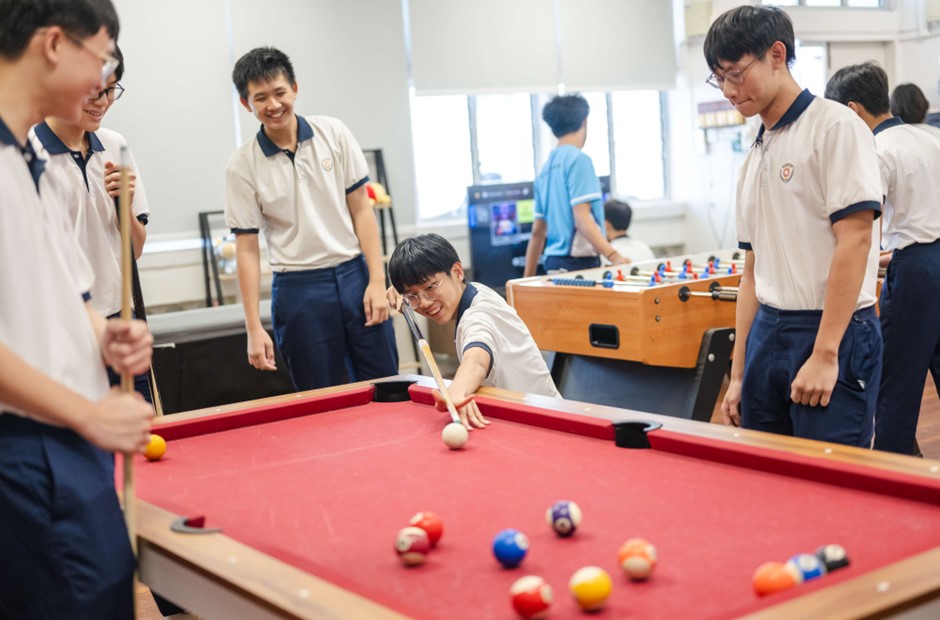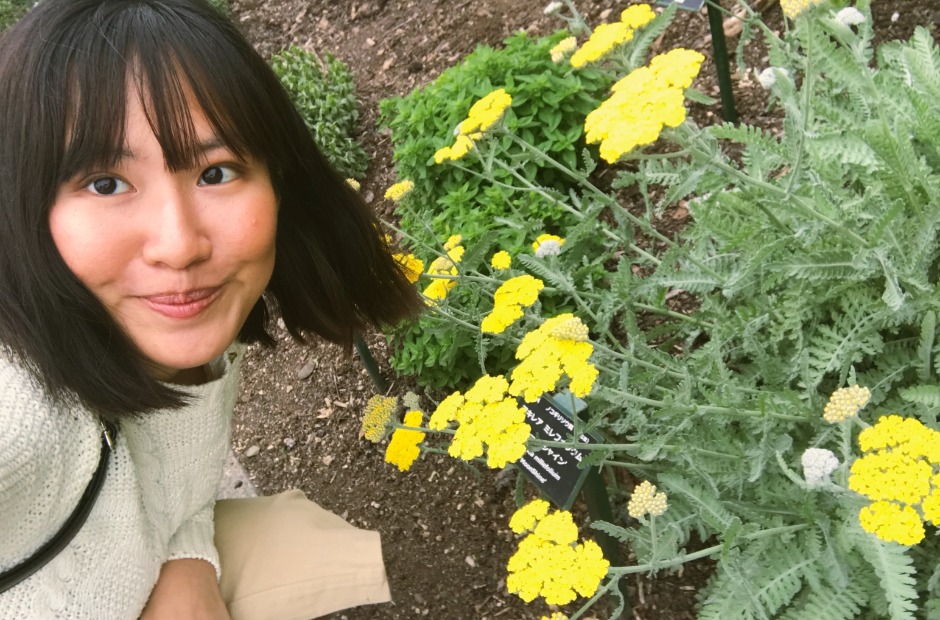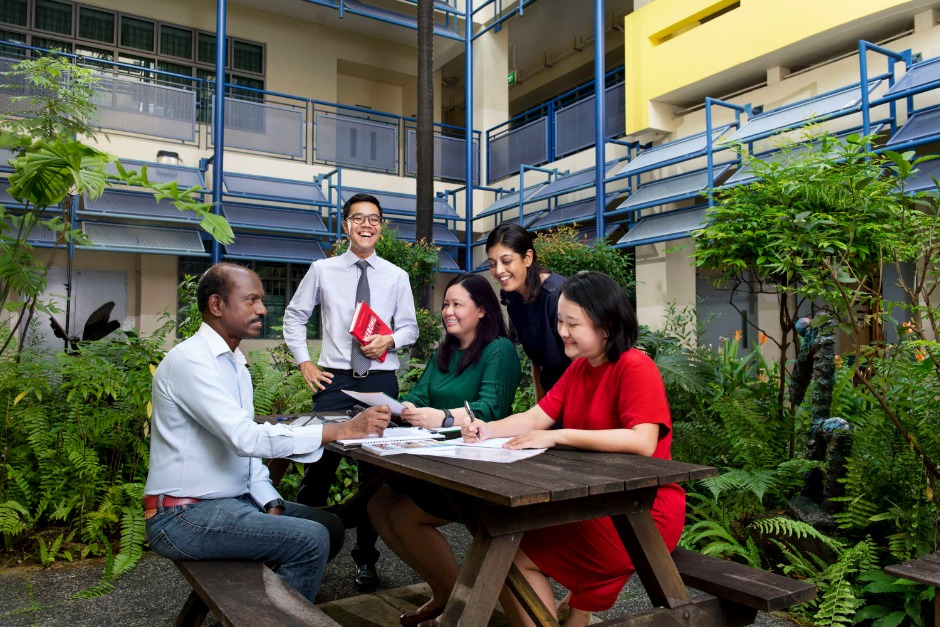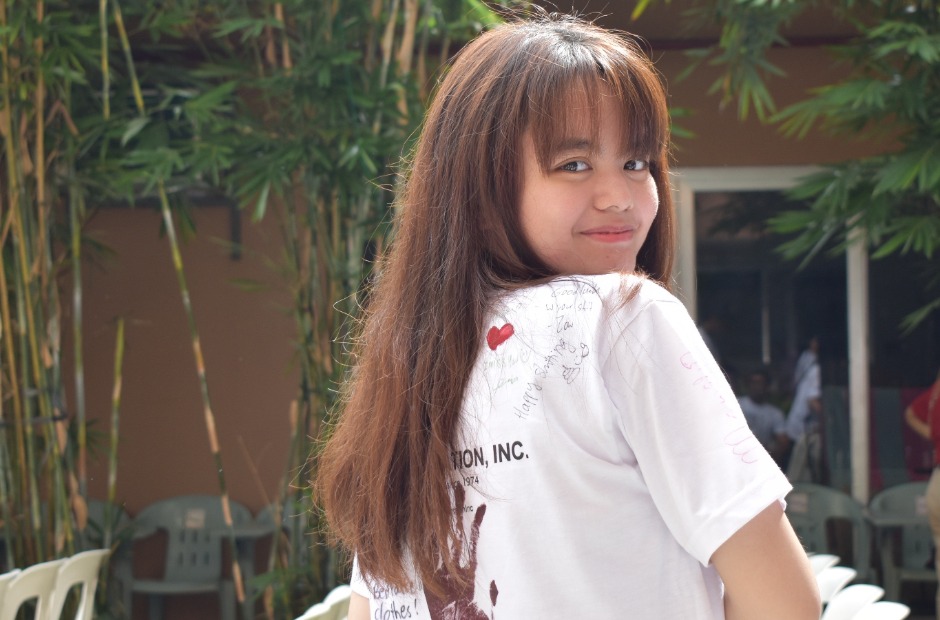You might think that school is a place that students can’t wait to leave at the end of the day. But now, through initiatives to turn designated spaces into hangout areas tailor-made for students to have fun, relax and bond, school has become more than just a place to study.
We visit three schools to get a glimpse of what draws students to stay back after school in these spaces, and how teachers say the spaces have made a world of difference in meaningfully engaging students. Across the board, students and teachers echo the same sentiments: these hangout spaces have done wonders in improving students’ mental well-being and school life. More than that, students are making fond memories, finding their communities, and gaining confidence while being supported to thrive both socially and emotionally.
In New Town Secondary School, the Oasis helps students build relationships and resilience
Walking into the Oasis, one enters a bright and cosy space replete with couches, plump beanbags, and a larger-than-life mural done by students. Here, New Town Secondary School (NTSS) students take their pick of activities, from billiards and board games to foosball and video games.

To students, the Oasis lives up to its namesake, offering a blissful retreat away from the stress of studies. “It’s like a different part of school,” says Secondary 4 student Ezanne Wong, one of the student crew who helps manage the space. “When you enter, it’s like being mentally away from school stresses and in a space where it’s just about making memories filled with laughter.”

The relaxed environment also facilitates “very organic” interactions, says Oasis teacher-in-charge Ms Nurul Aisyah Rosli, as students can freely and casually play games together even if they are unacquainted. As a result, the Oasis has helped bring together students across different backgrounds. This was most apparent when Tanglin Secondary School (TSS) merged with NTSS in 2023. The Oasis, as a common, safe and fun space, helped “build a stronger school culture by bringing a lot of people together”, says Ezanne, who was a former TSS student.
Students have also found communities here. Secondary 3 student Lee Chee Yat, who’s also a crew member, said the Oasis recalled the time when he had just entered secondary school. “I met a lot of people like me here, who were also not used to the school and to new people, so it helped me feel less lonely,” he says.
Students aren’t the only ones welcome at the Oasis. Teachers drop by to interact and play games with the students. “This helps students see their teachers in a different perspective, which builds rapport,” says Ms Aisyah. Positive interactions like this help students trust and feel comfortable enough to confide in teachers. “Talking to the teachers is very heartwarming for me,” Ezanne says. “When times are hard, I can just reach out to any of the Oasis teachers.”

In Boon Lay Secondary School, the Chill Zone helps students come into their own
At Boon Lay Secondary School (BLS), what looks like a quiet, non-descript bunker beside the school field houses an expansive space with everything from a full band set to a basketball arcade game. The interior is decked out with an eclectic mish-mash of memorabilia which are shifted around and refreshed every year, to reflect each cohort’s individuality.
The intent of creating a hangout space is to “provide a supportive interactive experience” that would foster students’ holistic development, says BLS principal Mr Inderjit Singh. “School is not just about the academic skills you acquire; it’s also about the socio-emotional skills and friendships you build. These experiences which you carry with you are hopefully some of the best memories of your youth.”

Turning the school’s civil defence shelter into the Chill Zone was a serendipitous decision perfectly suited for this purpose. The underground bunker contains all the noise that students can freely make, and there is no Internet connection, which means students spend their time off their devices, interacting and playing with others.
The multitude of recreational options also lets students discover and develop their interests, and form friendships. For example, Secondary 3 student Relangi Nikhil Venkat Sai was introduced to ping pong and pool at the Chill Zone. He was nursing a foot injury that prevented him from playing basketball. He now enjoys all these sports. And Secondary 2 student Syakira binte Mohamed Fauzi, who drops by the Chill Zone to play the guitar, has befriended students from other levels and teachers, striking up conversations over music and playing music together.

Students also build up their social skills as they enjoy the space together, notes Ms Bhavaniswari d/o Batumalia, teacher-in-charge of the Chill Zone. “They learn patience when waiting for their turn to play the games; they don’t rush each other and they are able to interact with people that they don’t know or have never met.”
Secondary 3 student Goh Zheng Hong feels he has grown more responsible by learning to tidy up after playing. Mr Singh attributes this to the high level of student input in creating the Chill Zone. “We don’t have cleaners for this space. The students take care of the space themselves. Because they have a voice in the space, they have a stake.”

This sense of ownership in the Chill Zone has given students the confidence to take initiative in other student matters, such as overseas trips too, notes Ms Bhavaniswari. “In the past, the teachers were the ones who organise everything. But now, the students will make suggestions and their opinions known. They put forth their ideas and manage things on their own,” she says proudly.
At Admiralty Secondary School, the Harbour gives students a sense of belonging
“A very buzzy, bustling place.” That is how teacher-in-charge Mrs Karen Yap describes the Harbour. Situated next to the canteen, at the core of Admiralty Secondary School, the hangout space is a hub of activity – alive with energy, high traffic, and boisterous laughter and chatter.

To students, being at the Harbour is an instant mood-booster. Secondary 3 student Sherman Chan, one of the Harbour crew, recounts his first impression of the space as an incoming student. “The experience was very joyful. I could see a lot of people laughing, having fun, and I just wanted to be a part of that atmosphere. Now, I am motivated to go to school, complete my lessons, and then I get to hang out in this space with all my friends. The relationships I’ve built are more significant than the games we have here,” he says. He also confesses, “If not for the Harbour, I’ll be at home right now playing with my phone and being unproductive.”

Another Harbour crew member Alfian Mohammed Rayyan, a Secondary 3 student and self-described introvert, credits the Harbour for bringing him out of his comfort zone. “My friendship circle has grown a lot, and I get to talk to more people at the Harbour than I did in primary school,” he says, adding that the Harbour crew is like a big family that helps one another when they run into challenges. “We chat a lot and bond well, so if there’s a problem, we usually discuss it together.”

Singing the same tune, Secondary 3 student Mok Hui En who is also a Harbour crew, says she considers collaborating in event planning and bonding with students from other levels her proudest achievement as a Harbour crew member.
The students’ statements underscore one of the key intents of the Harbour. “We want to pull students away from their gadgets by providing an environment for them to interact in person, form friendships, and experience affirmation from their peers and teachers,” Mrs Yap elaborates. “It’s like home in a school, where students feel a sense of belonging towards a space and the relationships they formed.”






